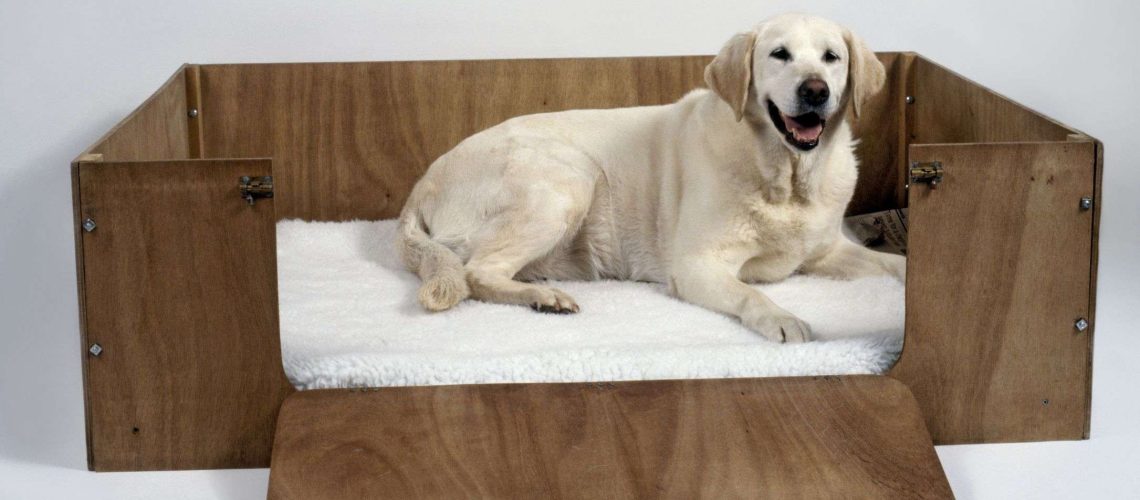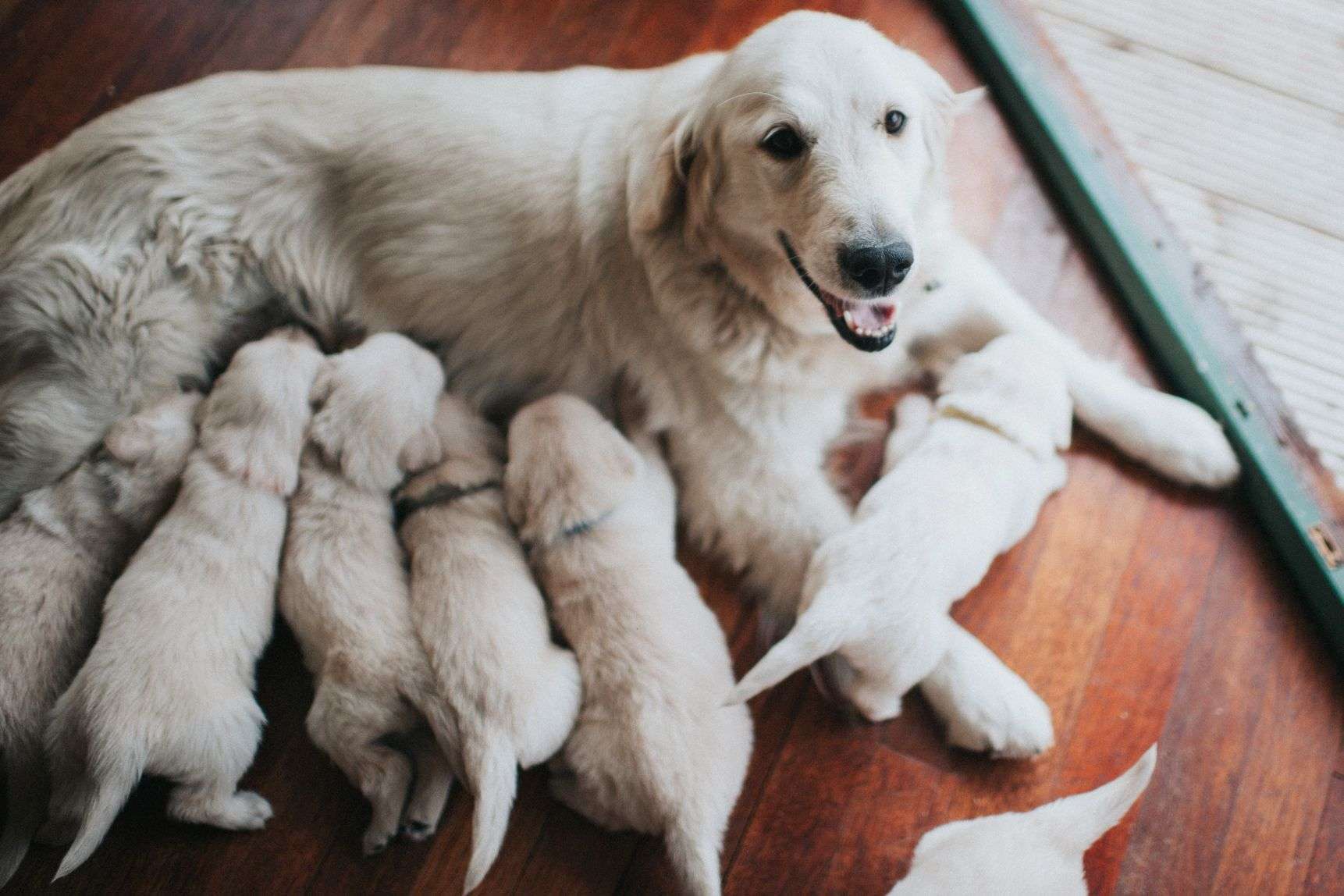Key Takeaways:
- Provide a balanced and nutritious diet to support the health of the pregnant dog and her developing puppies.
- Create a comfortable and quiet space for the pregnant dog to rest, ensuring she has access to fresh water at all times.
- Monitor the pregnant dog's weight and body condition regularly, adjusting her diet as needed to maintain a healthy weight gain.
- Consult with a veterinarian to establish a prenatal care plan, including necessary vaccinations and deworming treatments.
- Educate yourself about the signs of labor in dogs and have an emergency plan in place in case complications arise during birth.
Are you curious about the incredible journey of pregnancy and birth in dogs? Exploring the world of caring for pregnant dogs and preparing for their upcoming arrivals can be both fascinating and rewarding. By understanding the ins and outs of this topic, you'll gain valuable knowledge that can help ensure the health and well-being of these furry moms-to-be. Whether you're a dog lover or simply interested in learning something new, this subject offers a wealth of information that can deepen your understanding of our four-legged friends. So, let's dive into the world of pregnancy and birth in dogs, where we'll uncover the secrets behind their miraculous journey from conception to delivery. Get ready to embark on an exciting adventure filled with heartwarming moments and surprising facts!
Signs of a Pregnant Dog: What to Look For
When a dog is pregnant, there are some signs you can look for to determine if she is expecting puppies. One common sign is a change in her appetite. She may eat more or less than usual. Another sign is swollen nipples. As the pregnancy progresses, the nipples will become larger and may even change color.
Another sign to look for is behavioral changes. A pregnant dog may become more affectionate or seek more attention from her owner. She may also be more tired than usual and sleep more often. Additionally, you may notice that her abdomen appears larger and firmer as the puppies grow inside her.
Duration of Dog Pregnancy: How Long Does It Last?
The average duration of a dog's pregnancy, also known as gestation period, is around 63 days. However, it can vary slightly depending on the individual dog. It's important to know when your dog mated so you can estimate when she will give birth.
During the first few weeks of pregnancy, it can be difficult to tell if a dog is pregnant just by looking at her. It's only after about 25-30 days that you may start noticing physical changes like weight gain and an enlarged abdomen. Around day 45-50, you might even be able to feel the puppies moving inside her belly.
The Importance of Proper Nutrition for a Pregnant Dog
Proper nutrition plays a crucial role in ensuring the health and well-being of a pregnant dog and her developing puppies. During pregnancy, a dog's nutritional needs increase significantly as she needs to support not only herself but also the growing fetuses.
A balanced diet rich in essential nutrients such as protein, calcium, vitamins, and minerals is essential for the proper development of the puppies. It's important to feed a high-quality dog food that is specifically formulated for pregnant or nursing dogs. Additionally, it may be necessary to provide supplements recommended by a veterinarian to ensure all nutritional requirements are met.
Key Nutrients for a Pregnant Dog:
- Protein: Helps with tissue growth and repair.
- Calcium: Important for bone development in both the mother and puppies.
- Vitamins (such as vitamin A, D, and E): Support overall health and immune system function.
- Minerals (such as iron and zinc): Aid in various bodily functions and fetal development.
Essential Preparations Before Your Dog Gives Birth
Before your dog gives birth, there are several preparations you should make to ensure a smooth and comfortable experience for her and the puppies. Firstly, create a quiet and secluded area where she can give birth. This could be a whelping box or a designated space in your home that is warm, clean, and easily accessible.
Gather all the necessary supplies such as clean towels or blankets for bedding, disposable gloves for handling the puppies, scissors to cut the umbilical cords if needed, and an emergency contact number for your veterinarian in case any complications arise during labor. It's also helpful to have some puppy milk replacer on hand just in case the mother is unable to nurse or there are orphaned puppies.
Creating a Comfortable and Safe Space for Your Pregnant Dog to Give Birth
To create a comfortable and safe space for your pregnant dog to give birth, start by choosing an area away from high-traffic areas of your home where she can have privacy. Set up a whelping box or use a large, clean crate lined with soft bedding such as towels or blankets.
Make sure the area is warm and draft-free to keep the mother and puppies cozy. You can use a heat lamp or heating pad (set on low) to provide additional warmth, but make sure it is placed in a way that the mother and puppies cannot come into direct contact with it to avoid burns.
Items Needed for a Whelping Box:
- A sturdy box with high sides to prevent the puppies from escaping.
- Soft bedding such as towels or blankets.
- A heat source such as a heat lamp or heating pad (with caution).
- An easily washable liner to protect the flooring underneath.
Possible Complications During Dog Labor and How to Address Them
While most dog deliveries go smoothly, there can be some complications that require intervention. It's important to be aware of these potential issues so you can respond quickly and seek veterinary assistance if necessary.
Some common complications during dog labor include prolonged labor (more than 2 hours without progress), weak contractions, excessive bleeding, or the mother showing signs of distress. If you notice any of these signs, it's best to contact your veterinarian immediately for guidance.
Possible Complications During Dog Labor:
- Prolonged labor: If the mother has been actively pushing for more than 2 hours without delivering any puppies.
- Weakened contractions: If the contractions become weak or stop completely for an extended period of time.
- Excessive bleeding: If there is heavy bleeding before, during, or after delivery.
- Maternal distress: If the mother appears in extreme pain or shows signs of distress such as panting excessively or collapsing.
Caring for Newborn Puppies in Their First Few Weeks
Newborn puppies require special care and attention during their first few weeks of life. It's important to ensure they are warm, nourished, and protected from any potential health risks.
Keep the puppies in a warm and clean environment, ideally around 85-90°F (29-32°C), as they are unable to regulate their body temperature effectively at this stage. Monitor their weight gain regularly to ensure they are getting enough milk from the mother or bottle feeding properly if needed.
Tips for Caring for Newborn Puppies:
- Keep them warm: Use a heat source like a heating pad or heat lamp to maintain a constant temperature in the whelping box.
- Monitor weight gain: Weigh the puppies daily to ensure they are gaining weight steadily. Consult your veterinarian if you notice any significant weight loss.
- Feeding: If necessary, bottle-feed the puppies using a puppy milk replacer recommended by your veterinarian. Follow proper feeding techniques and frequency based on their age and size.
- Cleanliness: Keep the whelping box clean by changing bedding regularly and gently wiping the puppies with damp towels if needed. Avoid excessive bathing as it can cause chilling.
In conclusion, taking care of a pregnant dog involves providing proper nutrition, regular vet check-ups, and a comfortable environment. Preparing for the birth includes creating a safe space for the mother and puppies, having essential supplies ready, and being prepared for any emergencies that may arise. By following these steps, we can ensure the well-being of both the mother dog and her puppies during this special time.
How do I prepare my dog for pregnancy and birth?
In order to decrease the likelihood of any issues, it is recommended to prepare a whelping box for your dog well in advance of her expected due date. Ensure that the box is placed in a peaceful, warm area away from high-traffic sections of your home. Keep a close watch on your dog throughout the birthing process and only intervene if absolutely necessary.
What do dogs do right before they give birth?
In the last week of a dog's pregnancy, expectant mothers may feel restless and prefer to stay in a calm, secluded place. It is normal for them to have a decreased appetite and to dig in their bedding in the 12-24 hours before they give birth.
Should I stay with my dog when she gives birth?
When your dog is in the early stages of labor, it is recommended to maintain a safe distance and quietly observe her. It is interesting to note that dogs usually do not require much assistance during the birthing process, as their natural instincts guide them in whelping and caring for their puppies.
What to do before dog goes into labor?
Set up a quiet and private nesting area for your dog about a week before she is expected to give birth. Make it comfortable by placing blankets and towels in the area. There are various signs that indicate when labor is approaching.
What should be in a dog whelping box?
A whelping box is necessary for the puppies, and it should have absorbent materials like newspapers, puppy pads, incontinence pads, or vetbeds. It's also important to have clean towels or paper towels for cleaning up during labor, as well as towels for drying and cleaning the puppies.
What do you put in the bottom of a whelping box?
I typically use a cardboard box for whelping, adding extra cardboard on the bottom and lining it with shredded newspaper to create a comfortable and deep bed. Throughout the process, I remove wet paper and replace it with pre-shredded paper from a trash bag.
















